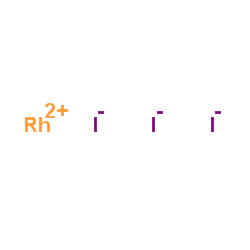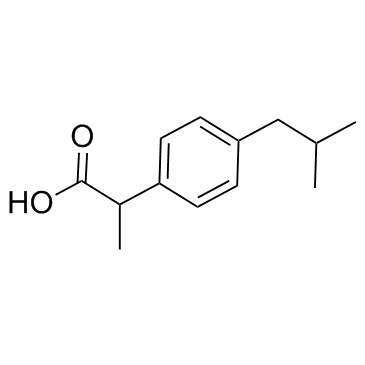15492-38-3
| Name | Rhodium triiodide |
|---|---|
| Synonyms |
Rhodium(III) iodide
RHODIUM(LLL)IODIDE EINECS 239-521-5 rhodiumiodide(rhi3) RHI3 rhodium iodide rhodium(3+) triiodide Triiodorhodium(III) Rhodium(III)iodide(-Rh) MFCD00016311 |
| Molecular Formula | I3Rh |
|---|---|
| Molecular Weight | 483.620 |
| Exact Mass | 483.619446 |
| LogP | 2.65710 |
|
Section 1: Product Identification Chemical Name:Rhodium (III) iodide (99.9+%-Rh) CAS Registry Number:15492-38-3 Formula:RhI3 EINECS Number:239-521-5 Chemical Family:metal halide Synonym:Rhodium triiodide
Section 2: Composition and Information on Ingredients IngredientCAS NumberPercentACGIH (TWA)OSHA (PEL) Title Compound15492-38-3100%0.01mg/m3 (as Rh0.001mg/m3 (as Rh Section 3: Hazards Identification Irritating to the respiratory tract. May be harmful if swallowed. Prolonged exposure to iodide salts may Emergency Overview: produce a mild toxic syndrome known as iodism. Primary Routes of Exposure:Contact with skin and eyes. Inhalation of dust. Eye Contact:Contact with eyes causes irritation, redness, and pain. Skin Contact:Causes irritation to skin. Symptoms include redness, itching, and pain, pimples, boils, hives and blisters. Inhalation:Causes irritation to the respiratory tract. Symptoms may include coughing and shortness of breath. Ingestion:Large oral doses may cause irritation to the gastrointestinal tract Acute Health Affects:Irritating to skin, eyes and respiratory tract. Chronic ingestion of iodides may produce iodism. Symptoms include skin rash, running nose, headache and Chronic Health Affects: irritation of mucous membranes. NTP:No IARC:No OSHA:No SECTION 4: First Aid Measures Immediately flush the eyes with copious amounts of water for at least 10-15 minutes. A victim may need Eye Exposure: assistance in keeping their eye lids open. Get immediate medical attention. Wash the affected area with water. Remove contaminated clothes if necessary. Seek medical assistance if Skin Exposure: irritation persists. Remove the victim to fresh air. Closely monitor the victim for signs of respiratory problems, such as difficulty Inhalation: in breathing, coughing, wheezing, or pain. In such cases seek immediate medical assistance. Seek medical attention immediately. Keep the victim calm. Give the victim water (only if conscious). Induce Ingestion: vomiting only if directed by medical personnel. SECTION 5: Fire Fighting Measures Flash Point:not applicable Autoignition Temperature:none Explosion Limits:none Extinguishing Medium:none required Special Fire Fighting Procedures:No special fire fighting procedures required. Hazardous Combustion andnone Decomposion Products: Unusual Fire or Explosion Hazards: No unusual fire or explosion hazards. SECTION 6: Accidental Release Measures To avoid raising dust, small spills may be mixed with diatomaceous earth, sand, vermiculite or other suitable Spill and Leak Procedures: inert material and swept up. SECTION 7: Handling and Storage Handling and Storage:Store solid in a tightly sealed container. SECTION 8: Exposure Controls and Personal Protection Eye Protection:Always wear approved safety glasses when handling a chemical substance in the laboratory. Skin Protection:Wear appropriate chemical resistant gloves and protective clothing. Ventilation:If possible, handle the material in an efficient fume hood. If in form of fine dust and ventilation is not available a respirator should be worn. The use of respirators Respirator: requires a Respirator Protection Program to be in compliance with 29 CFR 1910.134. Ventilation:If possible, handle the material in an efficient fume hood. Additional Protection:No additional protection required. SECTION 9: Physical and Chemical Properties Color and Form:black pwdr. Molecular Weight:483.62 Melting Point:no data Boiling Point:no data Vapor Pressure:no data Specific Gravity:no data Odor:none Solubility in Water:slightly soluble SECTION 10: Stability and Reactivity Stability:hygroscopic Hazardous Polymerization:no hazardous polymerization Conditions to Avoid:contact with moisture Incompatibility:halogens, hydrogen peroxide, chlorates and hypochlorites and active metals Decomposition Products:none SECTION 11: Toxicological Information RTECS Data:No information available in the RTECS files. Carcinogenic Effects:no data Mutagenic Effects:no data Tetratogenic Effects:no data SECTION 12: Ecological Information Ecological Information:No information available SECTION 13: Disposal Considerations Disposal:Dispose of according to local, state and federal regulations. SECTION 14: Transportation Shipping Name (CFR):Non-hazardous Hazard Class (CFR):NA Additional Hazard Class (CFR):NA Packaging Group (CFR):NA UN ID Number (CFR):NA Shipping Name (IATA):Non-hazardous Hazard Class (IATA):NA Additional Hazard Class (IATA):NA Packaging Group (IATA):NA UN ID Number (IATA):NA SECTION 15: Regulatory Information TSCA:Listed in the TSCA inventory SARA (Title 313):Title compound not listed Second Ingredient:none SECTION 16 - ADDITIONAL INFORMATION N/A |
| Safety Phrases | S22-S24/25 |
|---|---|
| WGK Germany | 3 |
| RTECS | YU7300000 |
| Packaging Group | I; II; III |
| HS Code | 2827600000 |
| Precursor 0 | |
|---|---|
| DownStream 1 | |
| HS Code | 2827600000 |
|---|


